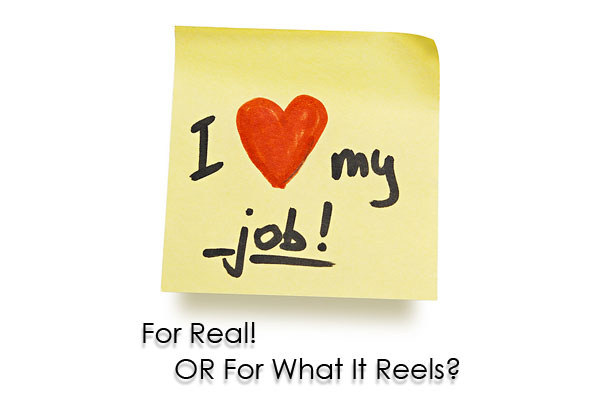Retaining Talent in Times of Change: Why Money Isn’t Always the Answer
“Nothing is work unless you’d rather be doing something else.“
George Halas (February 2, 1895 – October 31, 1983), was a player, coach, owner and pioneer in professional American football. Nicknamed “Papa Bear”, George was also the iconic founder and owner of the National Football League’s Chicago Bears.

One of my responsibilities, as my company’s Human Resource Partner, is to help managers make the right decisions on how they should reward their employees during our annual compensation review cycle. Over the years, a common assumption my managers may come to me for advice is, “How could anyone stay motivated to work if I don’t give them a raise? Everyone must get something or they will surely leave.”
Is there more to a job than just money? Lately the people who have been awarded 5-8% pay increases have been the ones to leave our organization. In one recent exit interview, a high-performing employee said, “For some reason, I get paid exceedingly well for what I do, and though it was nice, I just didn’t understand why the company won’t use the money to hire more help.” Interestingly, why do people still make the decision to stay with an organization after receiving no increase, while others leave after receiving an 11% increase in compensation and rave reviews?
As confirmed by recent articles and research on motivation, studies as far back as Meyer and Allen (1996) found that when employees increase their organizational commitment, they are less inclined to leave their organization. Their research shows that organizational commitment is influenced by three levers: 1. Affective – a strong identity with and an emotional attachment to an organization, 2. Continuance -feeling that benefits of staying outweigh the costs associated with leaving the organization, 3. Normative – a sense of duty or obligation to stay with an organization. A number of their studies showed positive workplace behaviors strongly relate to the Affective (i.e. identity, emotional attachment), and also the Normative (i.e. sense of duty) levers.
Imagine working for Organization-A: where you felt some degree of influence, saw value in contributing to the company’s goals and objectives, and where leaders thanked you because you really made a difference. More importantly, you believe in what your company represents and share the same core values. Now think of another work place, Company-B: where you are paid a lot of money plus bonuses and could accumulate more vacation time than have ever imagined. You can work from home whenever you want, but your boss wants to track emails, phone calls, and the completed spreadsheets every time you work remotely. Despite establishing credibility in your team, people outside your department don’t seem to know what you really do at work all day. You neither agree with your leaders’ values nor believe in their plans going forward.
Would you leave Company-B if you saw elsewhere a similar job posting of identical pay and benefits, where you could make an impact? Which organization would you want to do your best for? Would you be determined to help Company A or B when things were tight?
Action:
As managers, we can motivate our employees to stay on by building their organizational identity, emotional attachment and strengthen the sense of duty in our people:
- Be explicit about what is expected of each member at work (e.g., job expectations, how to meet and exceed expectations, how her role contributes to company objectives). Do your employees see how their jobs are important?
- Teach your employees to follow-up with you regularly (with what and how often). Is the scope of an employee’s job challenging enough, and does the organization provide some degree of autonomy?
- Know what each person is capable of contributing, and make sure you are utilizing your employee’s strengths on the job. Does the person enjoy being a mentor or solving complex problems? Is there a need for someone to be creative? Does he feel that the company is maximizing his competencies and strengths?
- Be a coach, not a drill sergeant. Are you dictating and requiring permission for people to take action, or are you developing your people to grow and take on new learnings and challenges? Is there a sense of insecurity throughout the workplace environment that “someone is always watching,” or “be sure to have everything, just in case you get thrown under the bus”?
Providing employees with compensation, benefits, and workplace flexibility addresses only our employee’s sense of gains and losses. Unless we try to build their sense of corporate identity, relational attachment and sense of duty, we can’t assume that policies and benefits will be enough to keep talented people from running out the door.
Source:
Allen, N. J., & Meyer, J. P. (1996). Affective, Continuance, and Normative Commitment to the Organization: An Examination of Construct Validity. Journal of Vocational Behavior, 49(3), 252-276. doi: http://dx.doi.org/10.1006/jvbe.1996.0043
Allen, N.J., & Meyer, J.P. (1997). Commitment in the Workplace: Theory, Research, and Application. Thousand Oaks, CA: Sage Publications, Inc.
Dewhurst, M., Guthridge, M., & Mohr, E. (2009, November). Motivating people: Getting beyond money. McKinsey Quarterly. Retrieved March 11, 2014, from http://www.mckinsey.com/insights/organization/motivating_people_getting_beyond_money
- Increase Employee Engagement and Performance by Connecting Company Mission Statement with Employees’ Actions - September 30, 2014
- Developing Resilience to Help Your People Through Change - July 29, 2014
- Promoting Technical Experts to People Managers - May 20, 2014
- Retaining Talent in Times of Change: Why Money Isn’t Always the Answer - March 18, 2014






